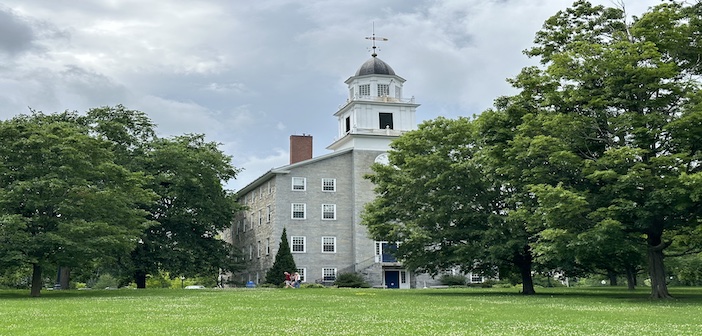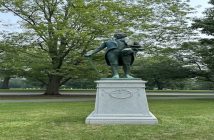I found myself in the middle of Middlebury, a small college town in Vermont next to copious skiing mountains. I heard a lot about Middlebury College from college tours and TikTok videos done by older students: It is in the middle of where it is supremely cold during the winter, and is white and preppy (filled by kids who all went to boarding school), and it is ranked #11 by US News for national liberal arts colleges and has an admission headquarters in Beijing but is impossible to get into. Giving Middlebury a well-rounded tour myself, I can vouch for the truth of some of these stereotypes and debunk some myths.

First things first, the geographical stereotypes are quite correct. Middlebury College does look like it resides in the countryside, with large green landscapes and white stone buildings covered in ivy. It is a village, not a city. Current students will also tell you how cold it gets during the winter, down to -15 to -20 degrees Celsius.
Besides abandoning fashion for proper winter gear, some upperclassmen try to never leave a building for one month, typically the Ross building, which includes a dining hall, classrooms, and dorms. Rumor goes that one student tried to complete this “Ross Challenge” for one week and the professor moved her classes out of the building because he was concerned for her health. To combat seasonal depression, Middlebury College has a 4-1-4 calendar. The “1” is called a “J term”, which is the month of January reserved for just one class. Students can be anywhere instead of holed up in Vermont, studying. Some students do the latter anyway; they aim to be a doctor and take one month of organic chemistry, breathing, and sleeping in laboratories to get an A, while others ski in the mountains, do yoga, travel, take internships, and so on.
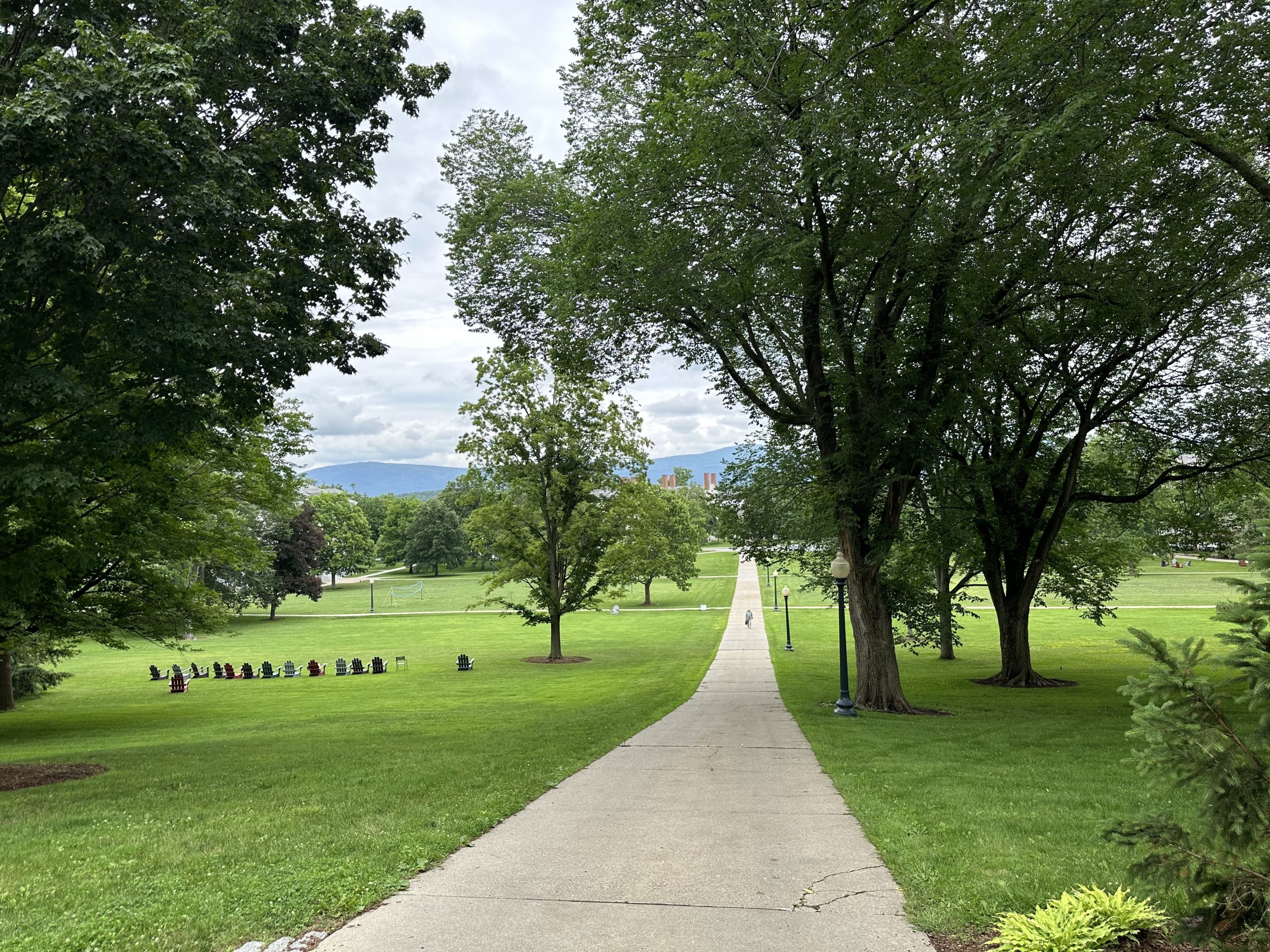
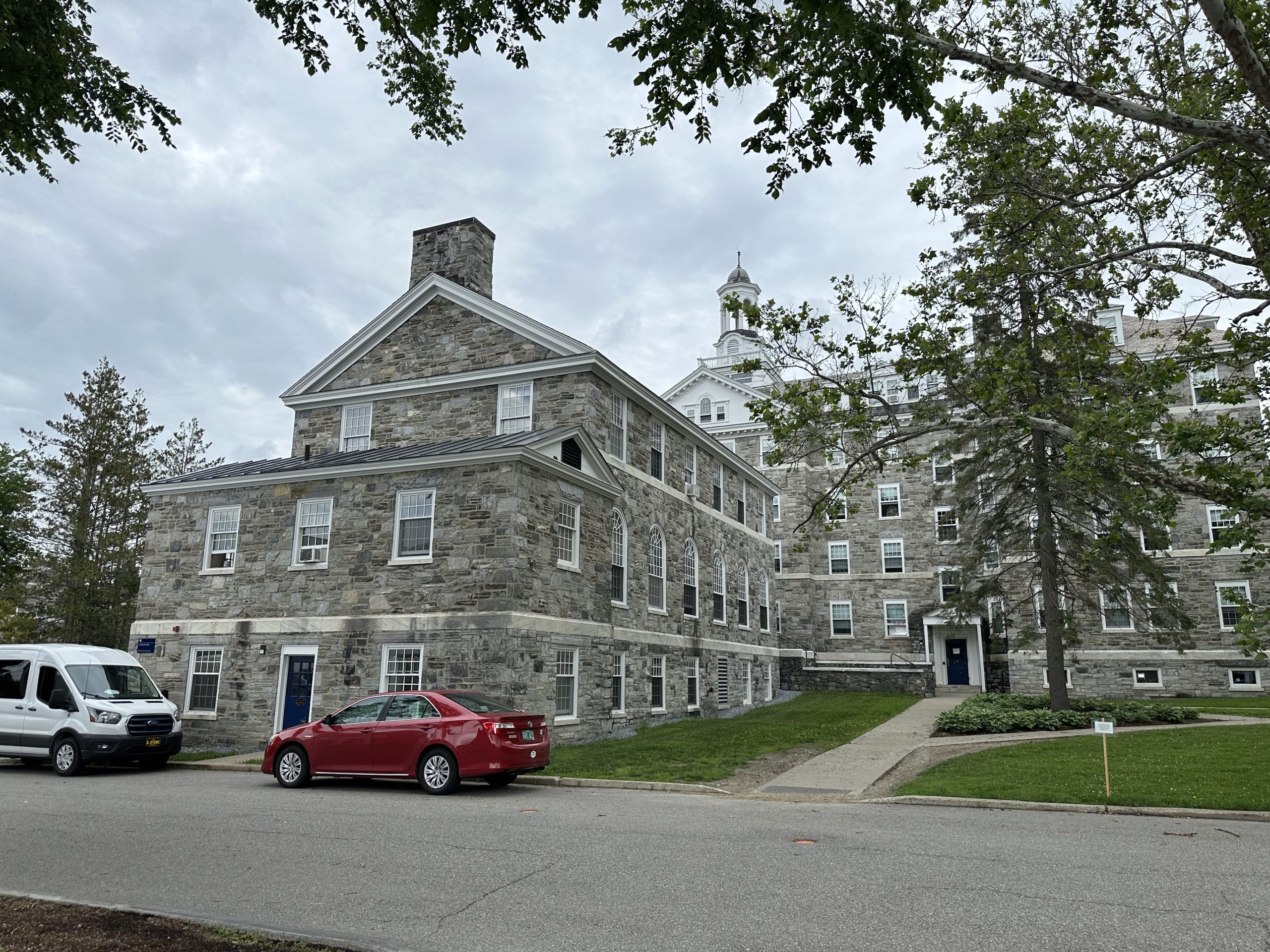
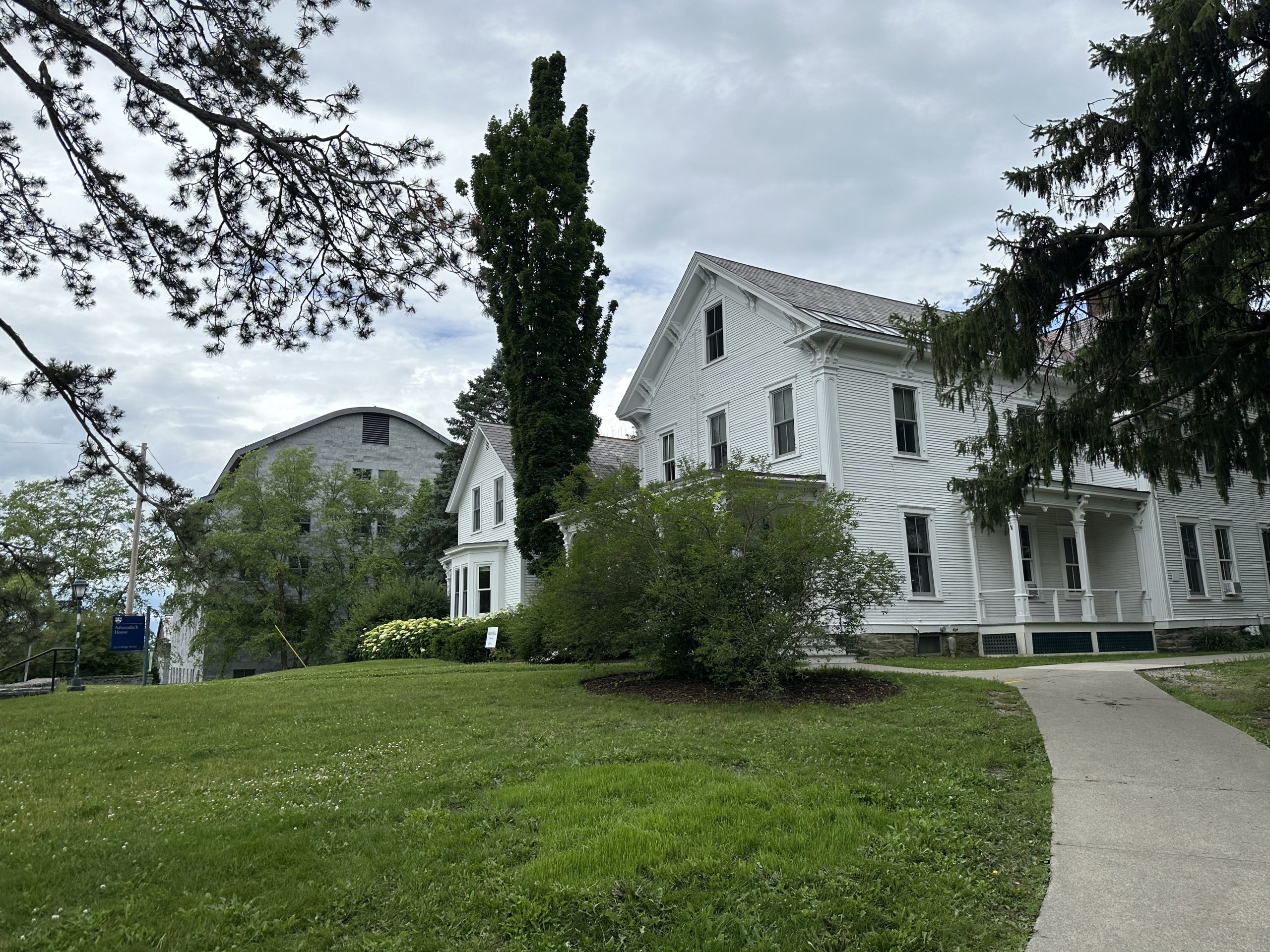
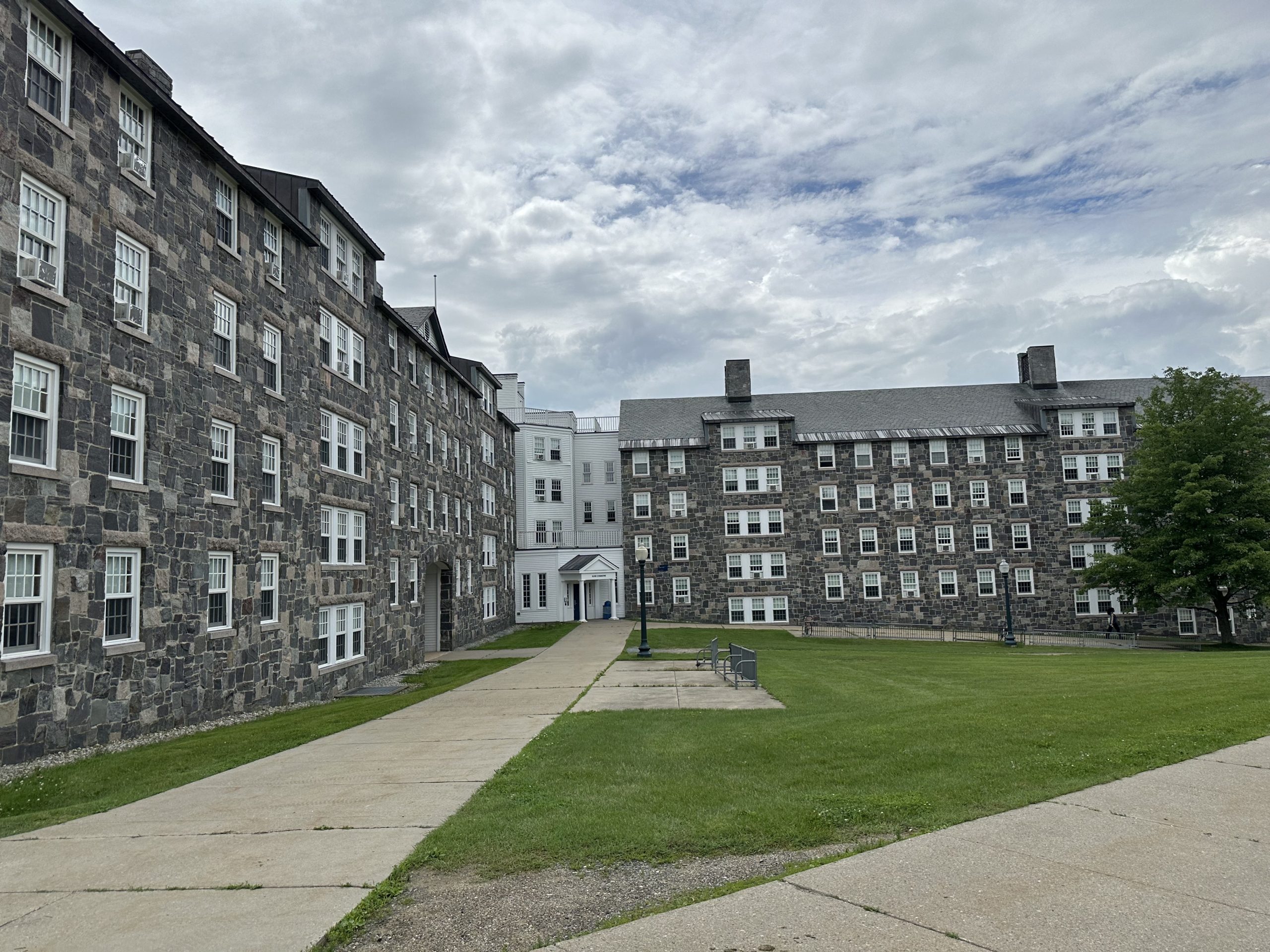
Let’s discuss the white, preppy boarding school culture Middlebury College is known for, which sometimes scares away a few international students who are weary of fitting in. Middlebury used to be a lot more homogenous than it is now, with the majority of students coming from a white Anglo-Saxon protestant background that denotes a series of similar interests: academic excellence, elite sports, outdoor activities, and gatekeeping traditions. Slowly Middlebury branched out for more diversity. Maybe it is not at an Ivy League or Californian university level, but throughout my visit there, I felt very welcomed, valued, and well taken care of. Maybe it is an effort at re-branding, the tour guides were relatively diverse, with one coming from a U.S. public school, one from Nepal, and another student of color from Maryland. The admission officer was relaxed, witty, good-humored, and exceptionally kind. I loved the social ambiance and atmosphere, which felt collaborative rather than competitive. Every student was academically motivated but also community-driven, helpful, and caring. According to my own anecdotal data, Middlebury College’s culture was open and comfortable.
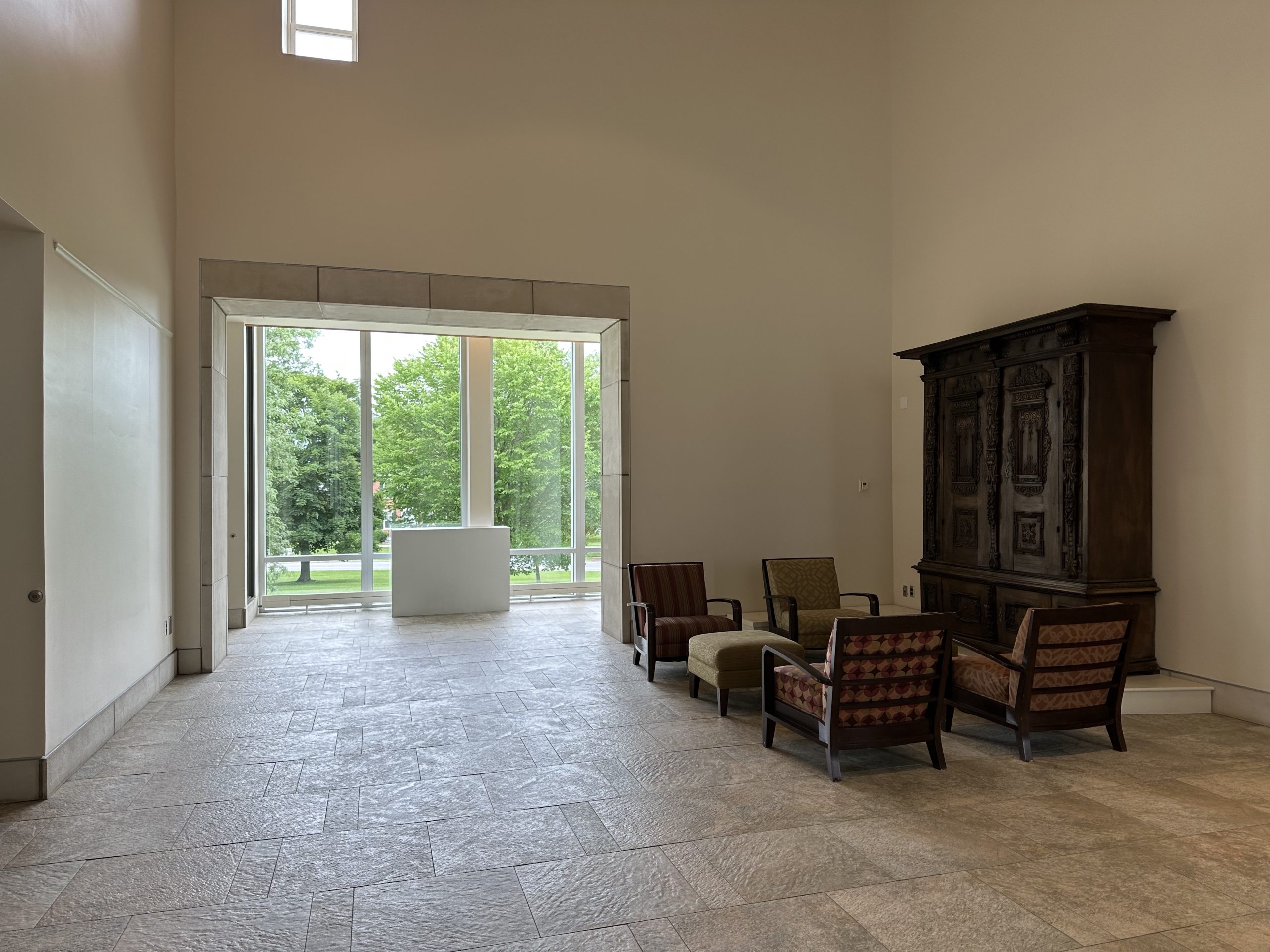
Finally, Middlebury College is difficult to get into for a reason. Its curriculum was originally modeled on Yale University in the 1800s before adding its own flavor and flair. Fifteen percent of the student body hold a non-American passport or grew up outside of America, so I wouldn’t say a student’s identity holds him or her back, but let’s take a look at the “best fit” for Middlebury College:
It has one of the best foreign language training programs with the highest standards in the United States, and all admitted students can utilize it fully. French, Spanish, Italian, German, Arabic, Hebrew, Russian, Chinese, Portuguese…you name it, as long as you take it very seriously. During Summer Immersion Programs and in language school residential and dining halls, students only speak the language they are studying. Students are GUARANTEED to reach the proficiency level of studying abroad using that language in their Junior year. Around ten years ago, Middlebury took over the Monterey Language Training Institute, the ranked #1 school for language training. That said, if you are not interested in languages, you don’t have to learn them to fit in. Middlebury has a core distribution across eight fields and students must take seven. Drop languages if you will, or science, or the arts, or philosophy and religious studies, or whatever you choose.
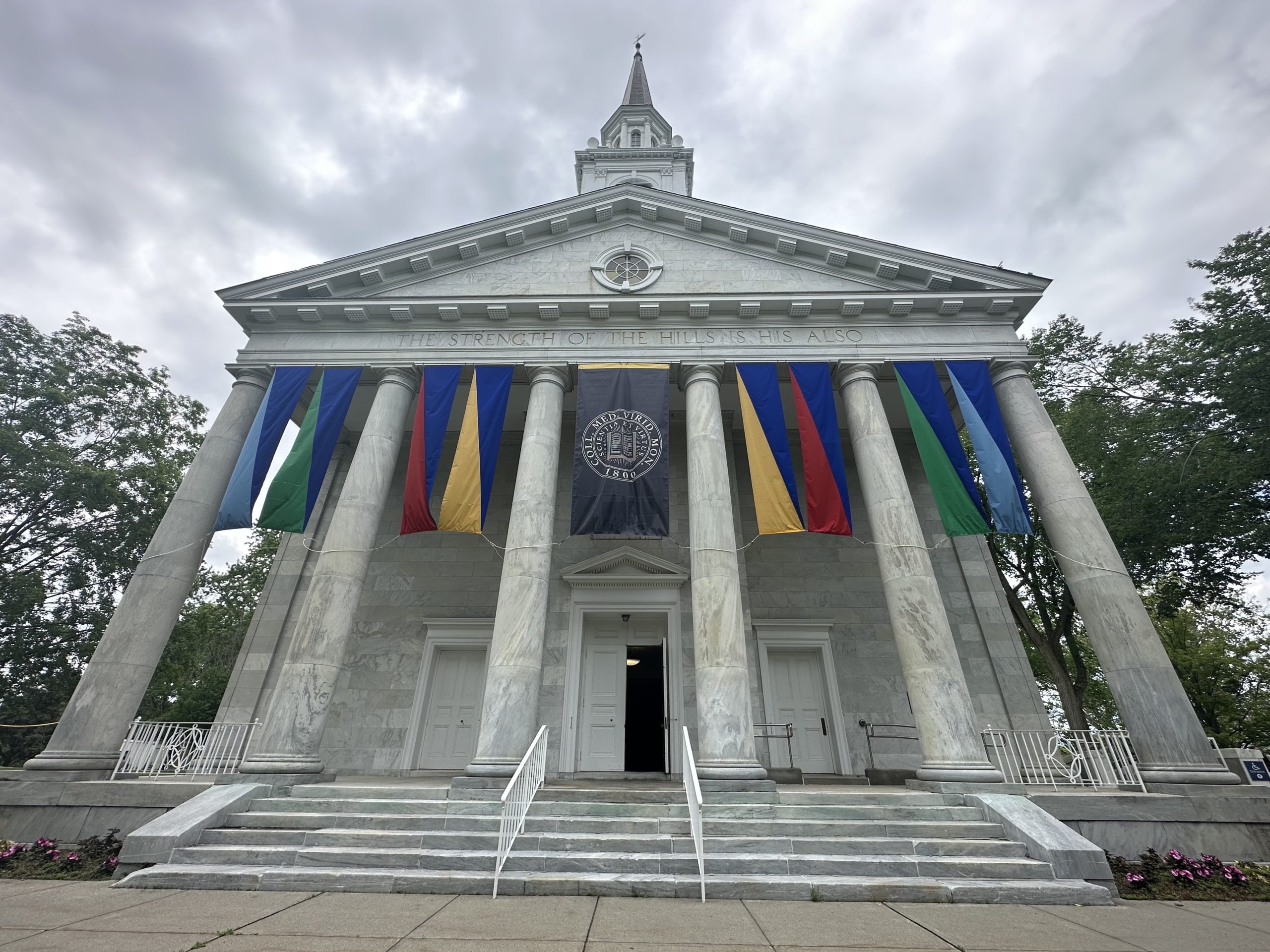
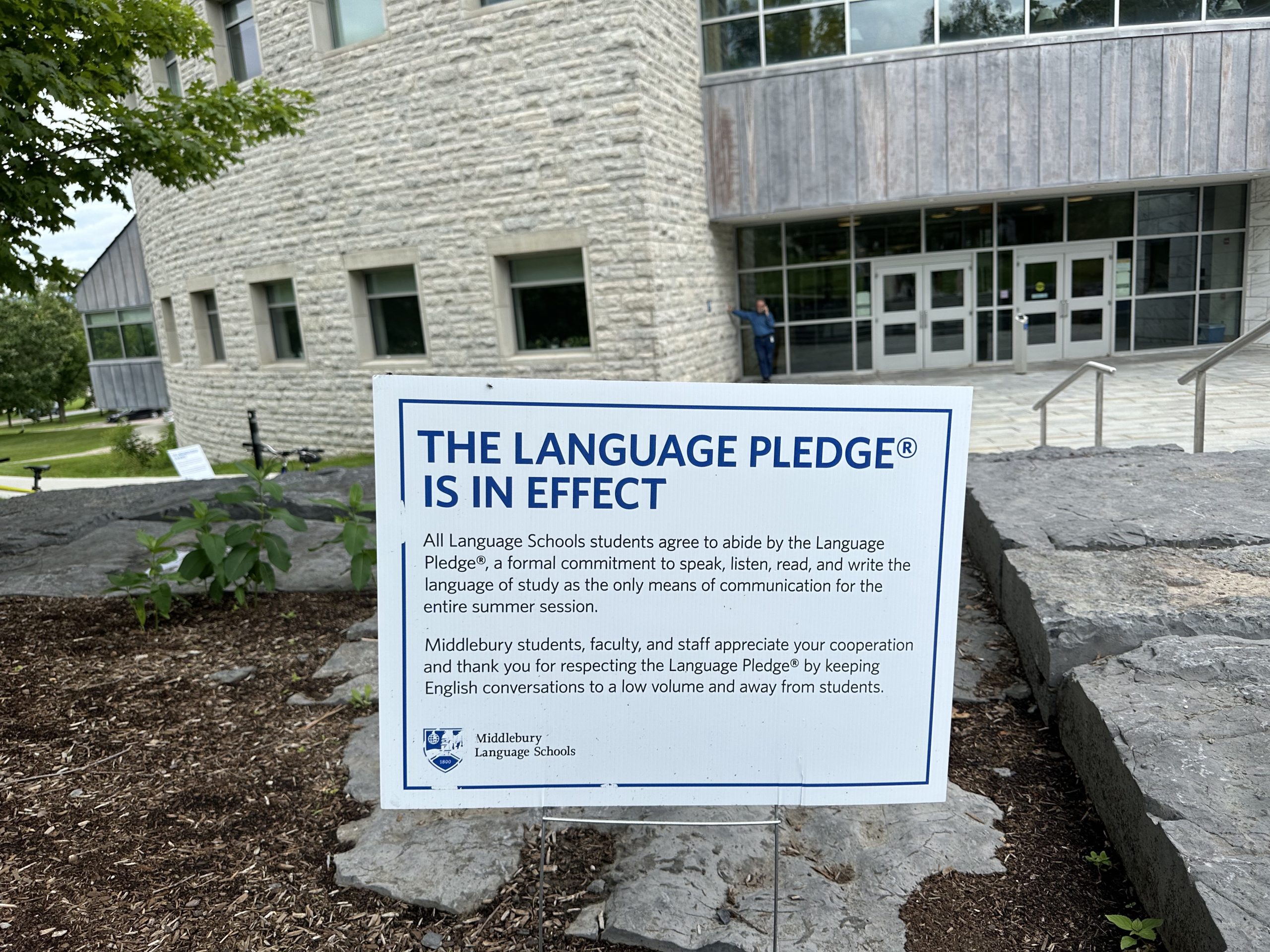
Middlebury College is also known for its Environmental Studies. The campus runs on completely sustainable renewable energy and protects nature at all costs, a proposal made by a group of graduate students from the environmental studies department. Students with a strong sense of initiative for the biodiversity and environmental sciences will feel at home here. Other popular majors include computer science, economics, and as predicted, English, with emphases on creative writing and literature. What I love about Middlebury College as a liberal arts institution is that every major has unprecedented potential. For example, a theatre major was hired at Goldman Sachs for finance, likely because his education provided him with solid foundations for communication, creativity, and confidence. Most graduates do attend graduate school in the end, though many choose to work for a few years first to gain experience before committing to quaternary education.

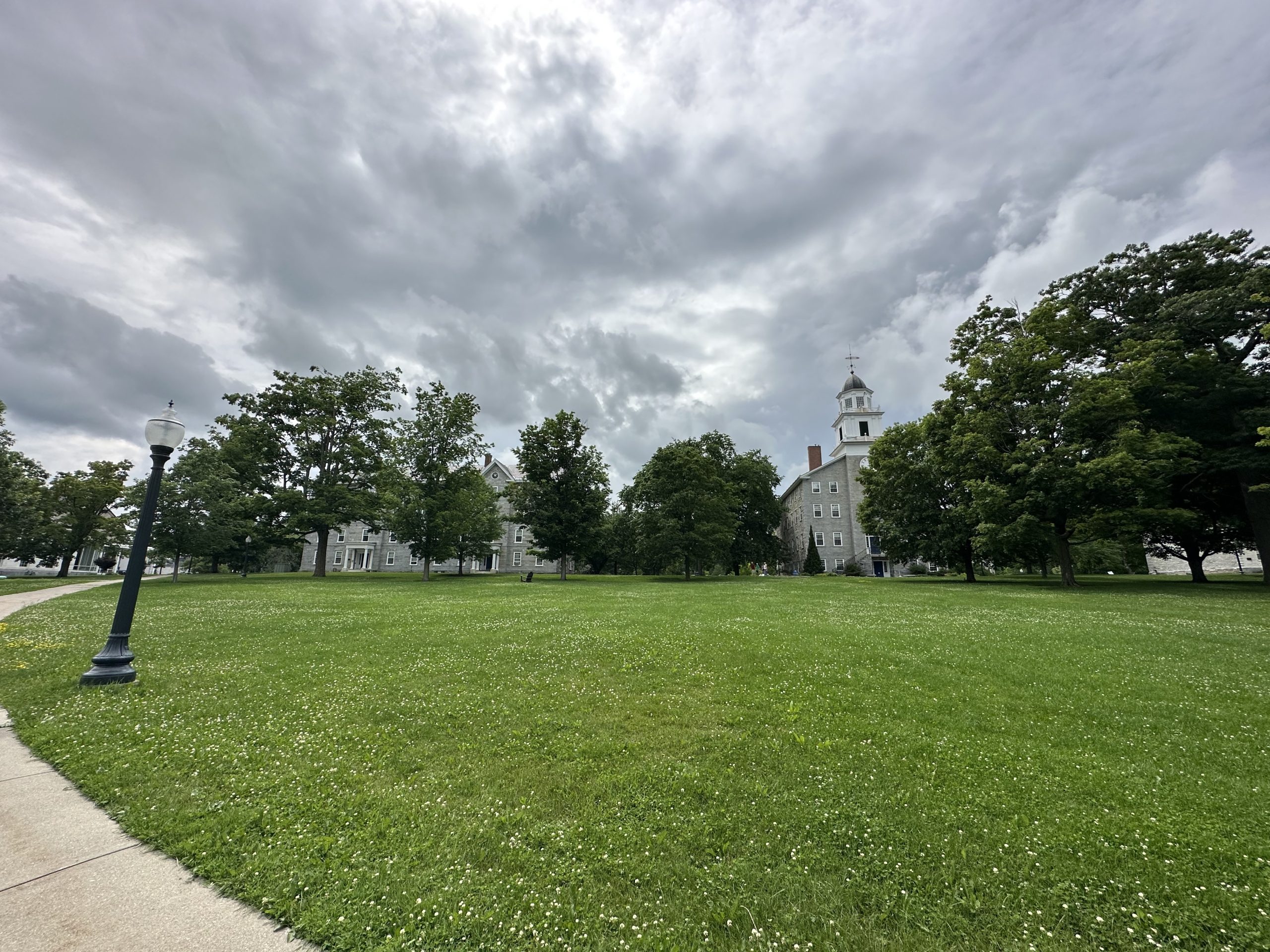
Middlebury Fun Facts:
- The 8 core distribution requirements I mentioned are literature, the arts, philosophy and religious studies, historical studies, physical and life sciences, deductive reasoning and analytical processes, social analysis, and foreign language. You can drop anyone you choose, as only 7 are required
- Sadly, you must complete 2 PE credits to graduate. Don’t worry, these are quickly earned. My tour guide joined a yoga club and went to 8 meetings a semester to earn credit.
- Skiing, skiing, and more skiing. Middlebury offers students free skiing passes and classes, so take advantage of the beautiful snowy mountains on campus
- If you enter Middlebury, there are two options. Enter during September (Seps) or February (Febs) to allow students a gap semester for self-exploration, and both groups integrate well as friends. Febs graduate later than Seps in the middle of winter, so they ski down the mountains for a grand ceremony. If you don’t know how to ski, no need to feel pressured, just find a way to get down there. Walk, roll, get pushed by your best friend…you know the drill.
- Middlebury is a division 3 sports team school, competing with the New England Small College Athletic Conference, called the NESCAC. Schools in the NESCAC are all top academic liberal arts institutions.
- The outing club is excellent!
- like every liberal arts college Middlebury has a well-connected, powerful, and extremely helpful alumni to help students find jobs, internships, and figure out their career. The attitude isn’t, “Now you’re here, what are you going to do once you leave”, but “What are you interested in, let me help you find that”. The career and alumni center is a lifelong resource. If you lose your job, they are here for you. If you are fifty years old and having a mid-life crisis, they are here for you. If you are considering retirement, they are here you. You are always welcomed with loving, open arms.
- The dining hall is unlimited. Meaning, that there are no such things as swipes and dollars for you to keep track of your meal plan and not spend extra money. As long as it’s open, you can go in and eat as much as you want. That is a good thing or a bad thing depending on how much self-control you have. Varsity sports teams pile their plates with mountains of meat, while some students melt a bowl of chocolate chips during exam season. No one is judged. The desserts are amazing, by the way.
- Freshman housing is randomly assigned through a survey about living habits. Upperclassmen can choose their own roommates. Single-gender housing only exists for the first years, then everything is co-ed. There are also suites and small houses for those who want to practice independent living.
- Middlebury has a beautiful library to study in. It’s Harry Potter in real life. If I’m lucky enough to be admitted I will stay there for hours.
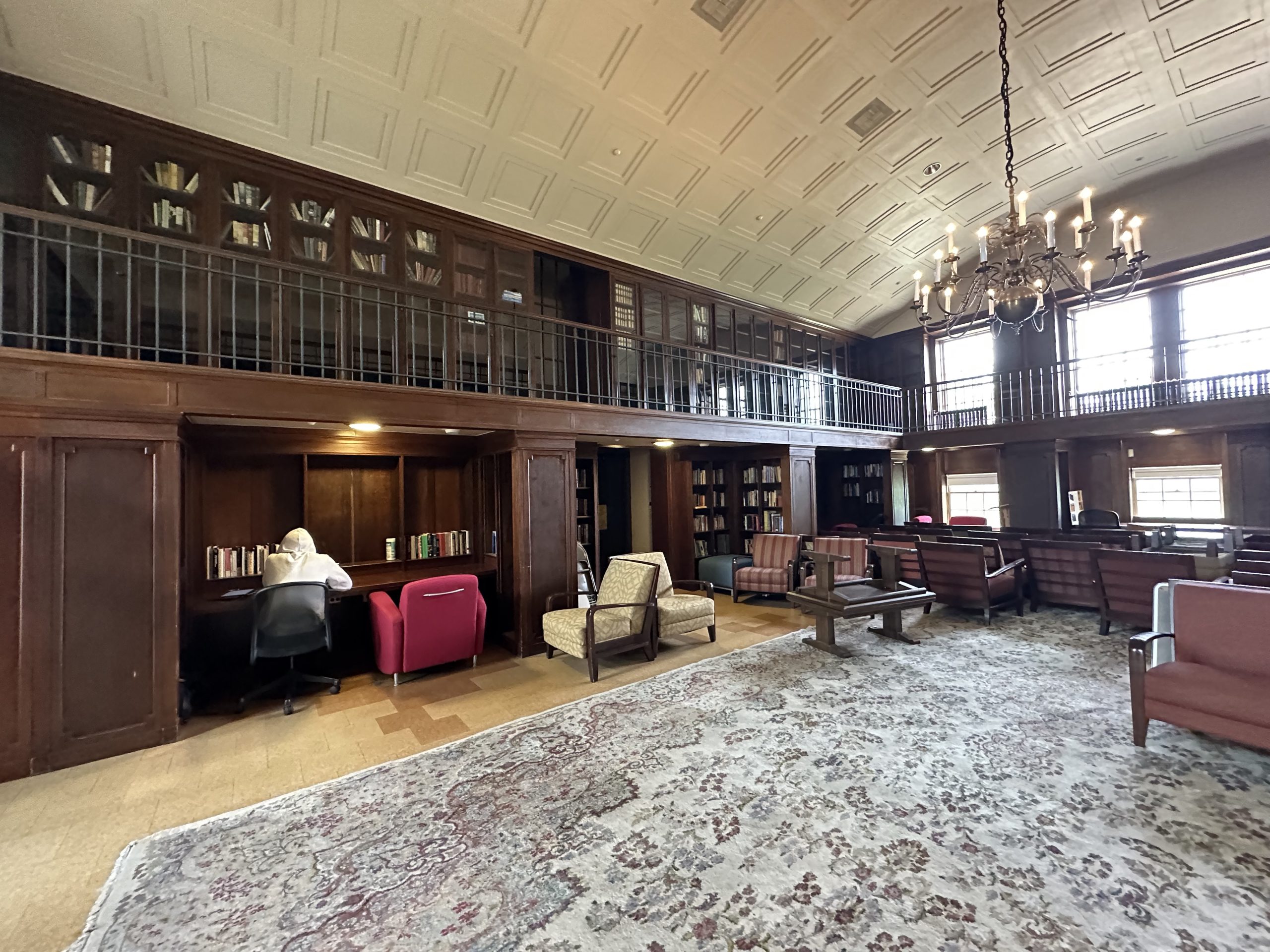
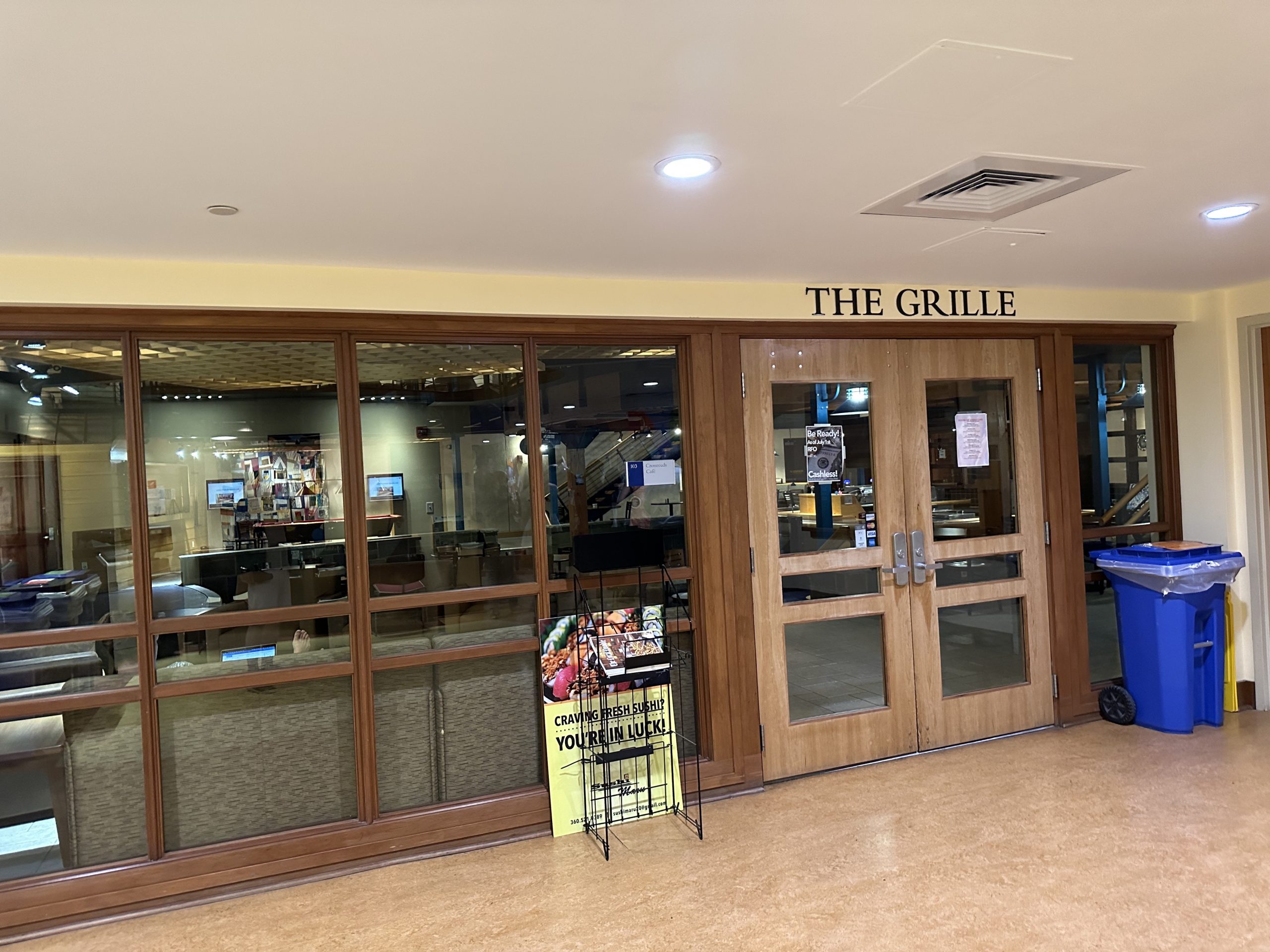
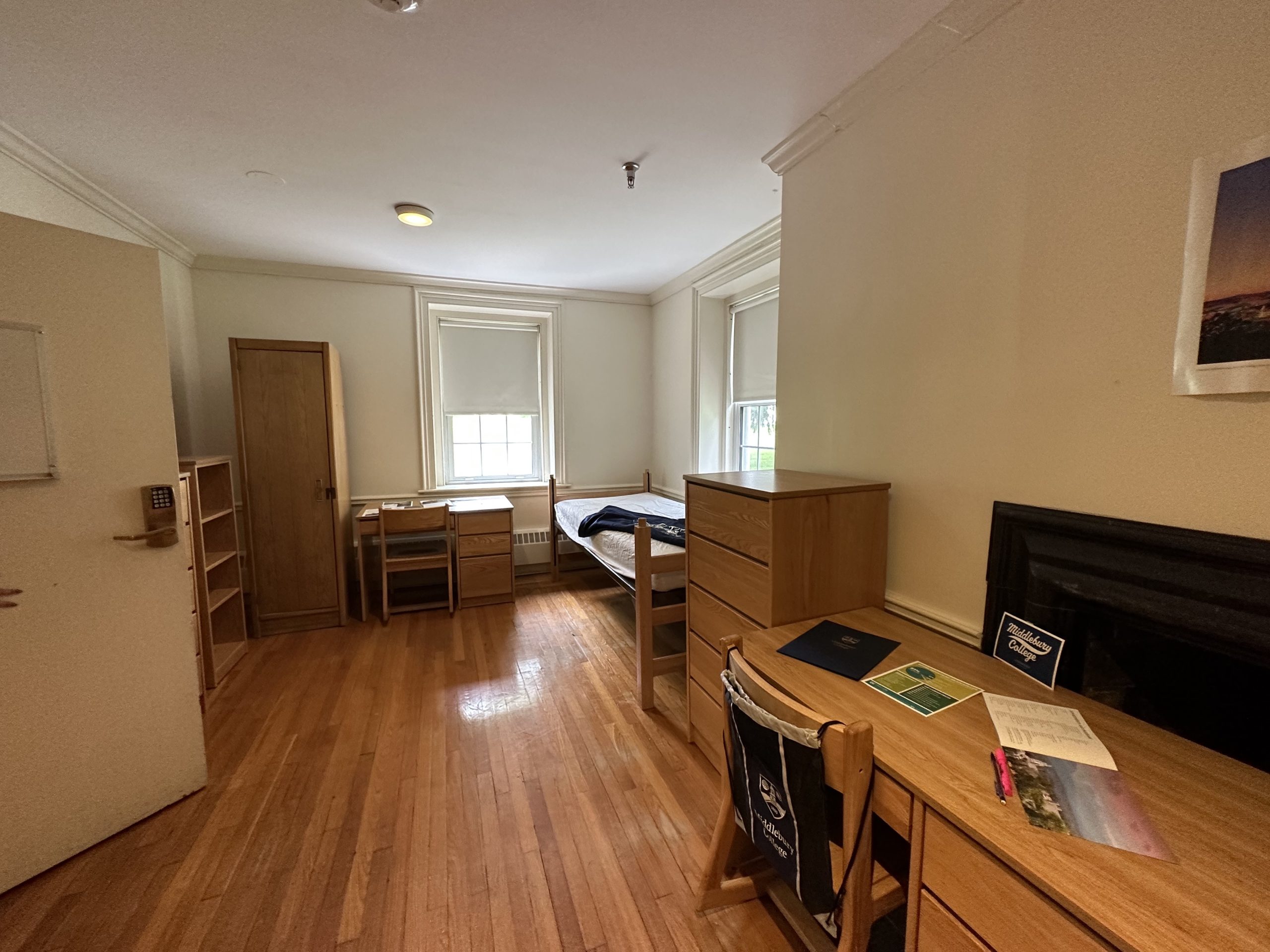
Middlebury is one of my favorite schools I visited so far, besides the location. Academically, socially, and culturally, I have no complaints.
Images: Helen Wang

